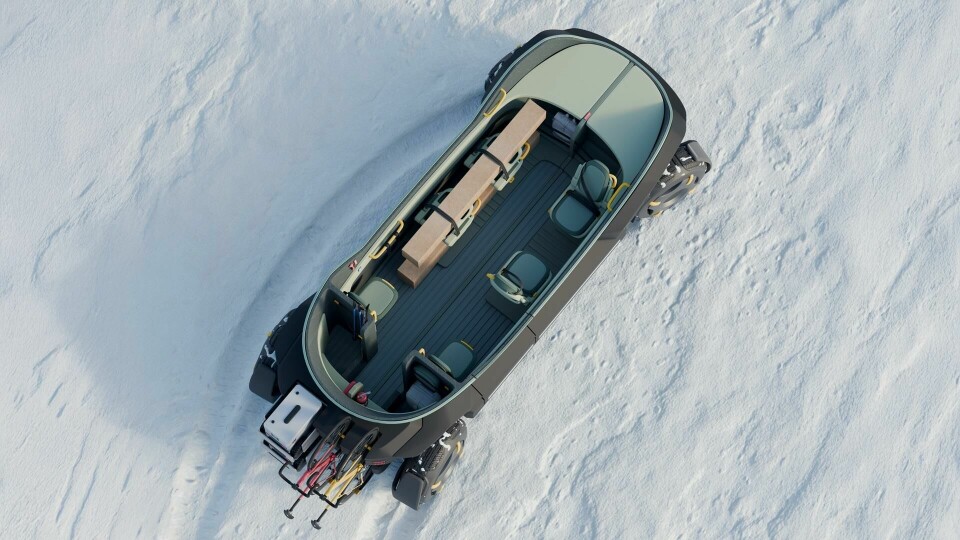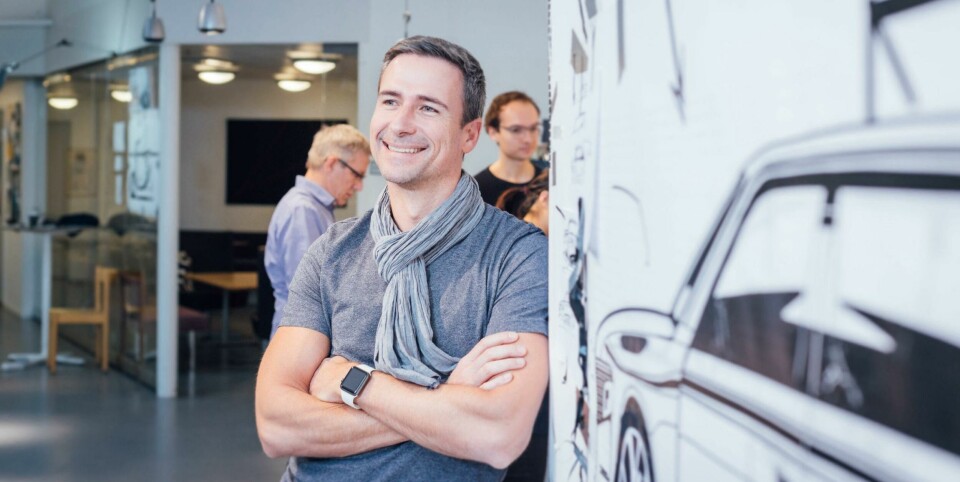
Highlights from the Umeå degree show 2025
Air-powered scooters, mobile vending machines and reimagined luxury: read on for featured mobility concepts at the 2025 Umeå degree show
Earlier this month students and professionals alike gathered in the remote yet picturesque setting of Umeå on Sweden’s eastern coast. Each year a group of promising designers present their final projects, work that has been imagined and built over the course of several months.
The show is quite something, feeling more in line with a ticketed event than a university production. The theme for this year’s degree show was ‘Bloom’ in a nod to students’ “sprouting creativity” and a nice metaphor for the projects that are nurtured from seed.
As with previous years, students were ultimately given free rein and in effect set their own brief, often alongside an OEM partner and guided by course leaders. Indeed, Scania, Hyundai, Zeekr and boatmaker Candela were involved this year as a result of the students’ networking efforts.
“Students are expected to identify design opportunities, establish contact with stakeholders and write a project brief which includes project goals, description of methods, anticipated deliverables and outline budget,” Demian Horst, head of the Umeå Institute of Design (UID) told Car Design News. “Students receive tutoring support throughout the project, with regular checkpoints to assess their progress. The final results are then presented and exhibited at our annual graduation event.”
Our previous visit to the UID show revealed a vast array of themes and typologies, and this year was no different. Horst notes there is “a wide range of mobility concepts, modalities and sizes, all responding to both immediate or more speculative needs identified in society.” In particular, there seems to have been a focus on quiet, clean transportation for coastal areas and affordable commercial vehicles when it comes to Master’s students.

The presence of OEM partners should not be underestimated. While it is up to the student to come up with the idea, the guiding hand of a professional that has designed at the highest level means that resulting projects find a balance between aspiration and reality. Horst points out that students end up making “informed decisions” thanks to feedback that is given throughout the process, from laying out the intial design brief to in many cases assisting with the build of a scale model.
“In these situations, graduates will experience the need to instruct and delegate tasks in the project,” he explains, “something that has a pedagogical value in following tight deadlines and developing the ability to direct aspects of the design execution.”
Read on for a selection of mobility-relevant concepts, with a brief description from the designer themselves.
Jusant – Mobility for Harsh Futures
Antonin Girard (MFA Transportation Design)
In a world reshaped by climate change, Jusant envisions a modular, air-powered scooter designed for small, resilient communities navigating extreme environments. Inspired by soft robotics, it’s a symbol of adaptability and hope—customisable for cargo, tools, or passengers.
New Rhythms – Designing for the Night
Demi Driessen (MFA Transportation Design)
As Southern Europe adapts to nocturnal living due to extreme heat, this autonomous three-seater reimagines night travel. With adaptive lighting, sensorial materials, and ritual-based design, it transforms mobility into a restorative experience.
VendPlay – The Future of Mobile Vending
Ziqi An (MFA Transportation Design)
Reviving the joy of street vending, VendPlay introduces a modular, community-driven platform for mobile vendors. Designed for 2030 urban life, it empowers self-managed vendor communities with smart tools and collaborative infrastructure.
Reimagining Coastal Accessibility
Iver Alexey Zaitzow Mikaelsen (MFA Transportation Design)
This autonomous ferry system opens up Norway’s rugged coastline to locals without boats. Electric, flexible, and harbor-free, it’s a sustainable way to explore coastal destinations—rooted in personal memories and a vision for inclusive travel.
HÊVÎ – First Aid for the Inaccessible
Farah Al Khamissi (MFA Transportation Design)
HÊVÎ is a smart, modular all-terrain vehicle built for disaster relief in remote areas. With shape-shifting wheels, solar/geothermal power, and AI-assisted navigation, it delivers critical aid within the first 72 hours after a natural disaster.
Rural Mobility – Connecting the Taiga
Alexander Borisch (BFA Industrial Design)
This autonomous shared vehicle tackles rural Sweden’s mobility gap. With a warm, functional interior and features like BankID access and equipment storage, it’s designed for inclusivity, sustainability, and year-round reliability.
Adaptive E-Aviation – Comfort in the Clouds
Emilie Brand Ahlström (BFA Industrial Design)
Hovvi rethinks seaplane interiors for the electric era. Lightweight, ergonomic, and sustainable, this seating concept enhances comfort while supporting the shift to carbon-neutral regional aviation via hydrofoiling e-seaplanes.
WERTHER – A Creative Retreat on Wheels
Juean Chen (MFA Transportation Design)
This off-road luxury vehicle offers a mobile sanctuary for Chinese internet literature writers. Blending workspace and relaxation zones, it supports creativity in nature—far from the pressures of urban life. Think Audi AI-Trail meets writer’s retreat.
Future Waves
Ellis Walker (MFA Transportation Design)
As small-scale water mobility evolves towards cleaner and more innovative solutions, this project introduces a modular electric outboard system designed specifically for dinghies and tenders. There are three primary components: a lightweight motor module, two compact battery units, and a connecting mounting bracket that also functions as an electrical connection. The foldable motor is permanently attached to the boat, streamlining day-to-day use and transport. Minimal in form and modular in function, the system is designed with future technological advancements in mind.
Epiroc Dunn
Jinying Cheng (MFA Advanced Product Design)
This fully automated mining system is designed to locate, extract and transport minerals without human intervention. The system consists of two integrated components: the main mining unit and swarm haulers. The main mining unit features robotic arms capable of executing the entire extraction process, while its built-in conveyor belt ensures smooth and efficient ore transfer to the autonomous haulers. Together, they form a seamless high-performance mining solution.
Carita
Anna Fletcher (MFA Transportation Design)
This modular, autonomous system of mobile service capsules aims to counteract the decline of essential services in rural communities. The Carita healthcare capsule, for example, addresses the pressing issue of rural medical care shortages, where elderly and mobility-impaired residents often face long, difficult journeys for basic healthcare. Developed through ethnographic research and user-centered design, Carita exemplifies how the overall modular system can bridge critical gaps in rural infrastructure. By integrating technology, ergonomic design, and a strong community focus, the project empowers residents, improves health outcomes, and offers a scalable blueprint for revitalising rural life and essential service provision.
Unprocessed luxury
Márton Szalai (MFA Transportation Design)
We tend to think of luxury as the ultimate curated comfort and freedom from limitations. Cocoon-like environments where technology isolates users from discomfort but also from the richness of life. Could luxury mean immersion in life, not escape from it? This collaboration with Zeekr reframes luxury as “an elevated experience of human existence”. In a world optimized for ease and control, raw experiences that don’t obey us, or even hurt us has become rare. What resists you, talks back, — a rock, a storm — makes an experience feel more real. In this digital age, friction is the mark of the real. In my thesis project, pain, resistance, and unpredictability aren’t obstacles to luxury — they are the Unprocessed Luxury.















































































































































